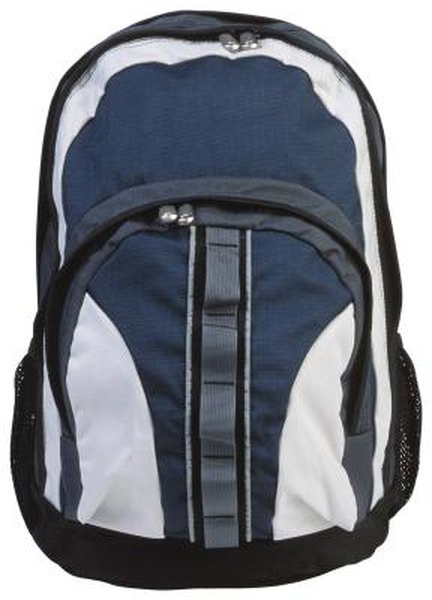
A daisy chain is a vertical length of webbing with multiple loops that serve as attachment points for mountaineering and camping gear. Daisy chains are normally stitched to a rucksack or backpack in one or two rows to increase the carrying capacity of the pack; while making it more convenient for the hiker to access frequently needed items.
Multitude of Uses
Originally, daisy chains were designed for rock climbing gear, such as ice axes, carabiners and other climbing essentials. They have since become a standard feature on ordinary backpacks because they provide a simple way to carry cumbersome gear, such as helmets, boots, stoves and bedrolls; and frequently-used items like cameras and canteens. They can also be used to carry wet or soiled gear that you don’t want to put into your pack. Last, the loops make it easy to lash packs securely to boats, motorcycles, pack animals and so forth.
Full Support
Usually found on the front of your rucksack, daisy chains are typically made of nylon webbing and comprise four or more small loops stitched at 1-inch intervals. While they vary in width and strength, heavy-duty daisy chains are reinforced with Hypalon, PVC or a similar material and are able to support the weight of camping stoves and other bulky gear.
Securing Gear
Depending on its size, a piece of gear might fit snugly into one or two daisy chain loops; much as a hammer would fit into a tool belt. Other types of gear can be attached to the loop with a carabiner, an elastic strap or a buckled strap. Run rope through daisy chain loops to help secure gear lashed to the side of a pack.
Ease of Use
The convenience of daisy chains makes it easy to overload your pack. When attaching gear to daisy chain loops, distribute the weight evenly so that you do not lose your balance. This is especially important for full canteens, stoves and other heavy items. Also, if gear is clipped or buckled at only one loop, it may irritate you by swinging, bouncing or rattling constantly as you walk. Having a pair of daisy chains will make it easier to balance your load and keep your gear from moving while you hike.
References
- Backpacker Magazine; Optimize That Daisy Chain
Writer Bio
David Swan has been a professional writer since 1991, working primarily on academic titles. He has written and edited textbooks on green business, community redevelopment and the chemistry of hazardous materials.



